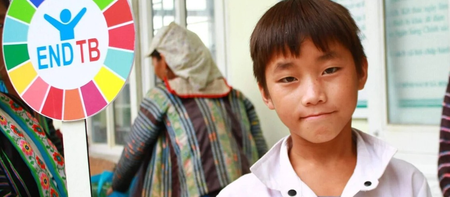‘Encouraging gains’: WHO lauds India for narrowing TB detection gaps, reducing mortality

New Delhi, Nov 18 (IANS) The World Health Organization (WHO) on Tuesday lauded India for making ‘encouraging gains’ to end tuberculosis (TB), with narrowing detection gaps and reducing mortality.
According to the recently released WHO Global Tuberculosis Report 2025, India’s TB incidence fell by 21 per cent — from 237 TB cases per lakh population in 2015 to 187 per lakh population in 2024 — almost double the pace of decline observed globally, at 12 per cent.
The country’s TB mortality rate decreased from 28 per lakh population in 2015 to 21 per lakh population in 2024, reflecting significant progress in reducing deaths due to TB.
The flagship TB Mukt Bharat Abhiyan, launched in December 2024, has achieved extensive reach, screening over 19 crore vulnerable individuals for TB across the country, leading to the detection of over 24.5 lakh TB patients, including 8.61 lakh asymptomatic TB cases, the report said.
Globally, 10.7 million people developed TB and 1.23 million died from the disease in 2024.
The WHO stated that India, along with other countries in the South East Asia Region, reported improvement in TB.
In absolute numbers, India had an estimated 2.71 million people with TB, followed by Bangladesh 384,000, Myanmar 263,000, Thailand 104,000, and Nepal 67,000.
“Several countries demonstrated encouraging gains. Bangladesh, India, and Thailand notified a large proportion of estimated cases, narrowing detection gaps,” the WHO said.
“TB-related mortality, though substantial, has shown signs of improvement in several Member States. Bangladesh, Bhutan, India, Nepal, and Thailand reported declines in estimated deaths due to TB compared to 2015, supported by recovery of essential TB services in the post-Covid-19 era,” it added.
Yet, the global health body stated that the overall pace of decline across South East Asia remains insufficient to meet the 2025 End TB milestones.
The South-East Asia Region, home to less than a quarter of the global population, disproportionately accounts for more than one in every three new TB cases worldwide, emerging annually, the WHO said.
Drug-resistant TB continues to pose a serious threat, with 150,000 new cases estimated in 2024.
While the Region has reduced TB incidence by 16 per cent since 2015, but deaths are not falling fast enough. Moreover, the Region’s TB incidence rate of 201 per 100,000 people remains well above the global average of 131, the UN health body said.
“Tuberculosis continues to threaten health security and development across the South-East Asia Region, hitting the poorest the hardest,” said Dr Catharina Boehme, Officer-in-Charge, WHO South-East Asia.
“We know what works — early detection, rapid treatment, prevention, and strong primary health care. What’s needed now is speed, scale, and sustained political and financial commitment,” she added.
TB burden in 2024 continued to vary across the Region. Myanmar and Timor-Leste continued to record high TB incidence rates at around 480-500 per 100,000 population, placing them among the higher-incidence settings globally.
Bangladesh, Bhutan, India, Nepal, and Thailand reported incidence levels between 146 and 269 per 100 000 reflecting steady but too-slow declines.
Sri Lanka and the Maldives remained relatively low-incidence settings, with incidence ranging from 50-99 and 10-49 cases per 100,000 population, respectively.
–IANS
rvt/




